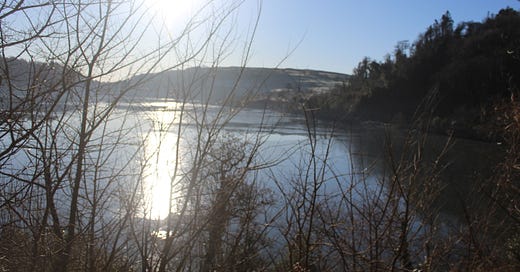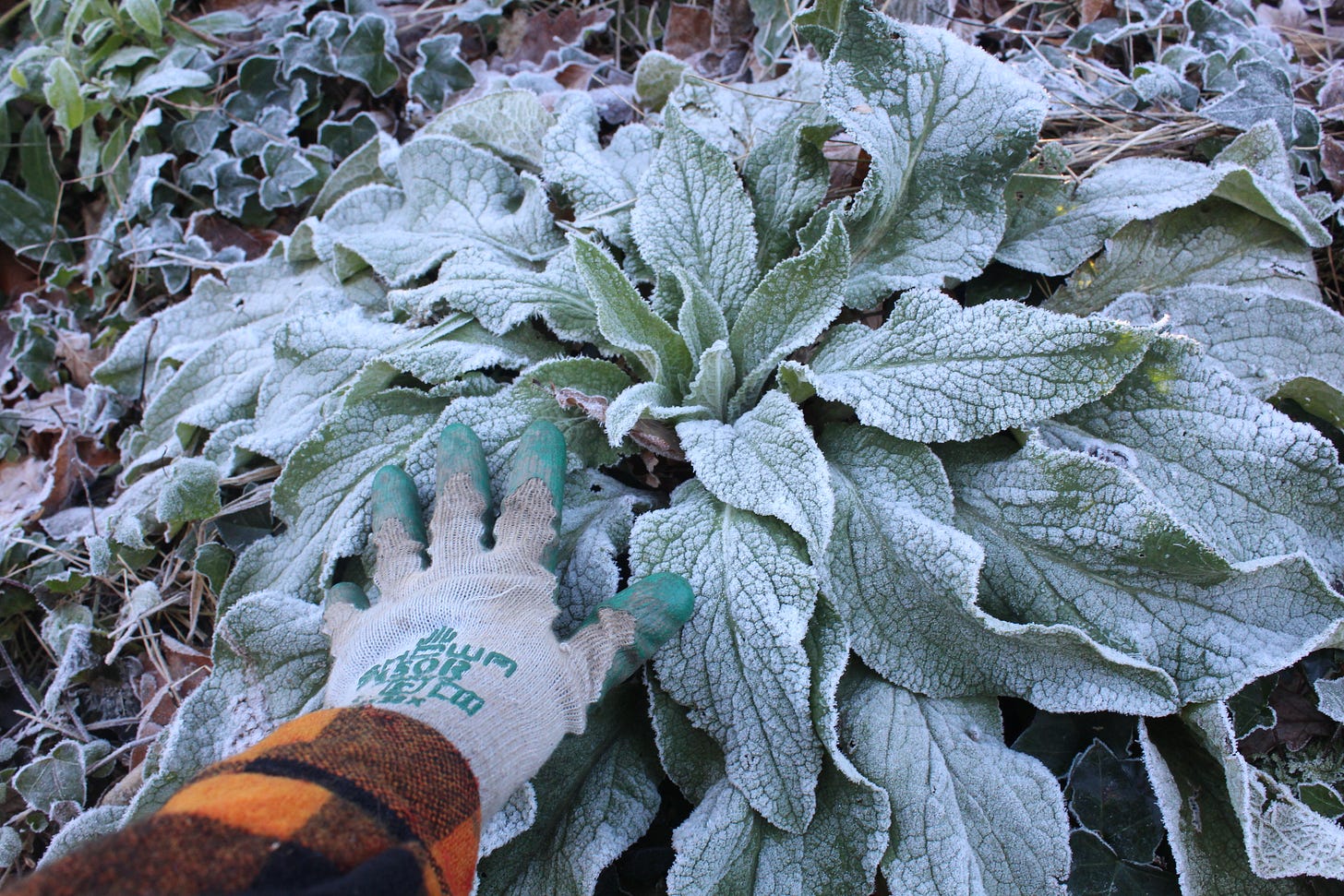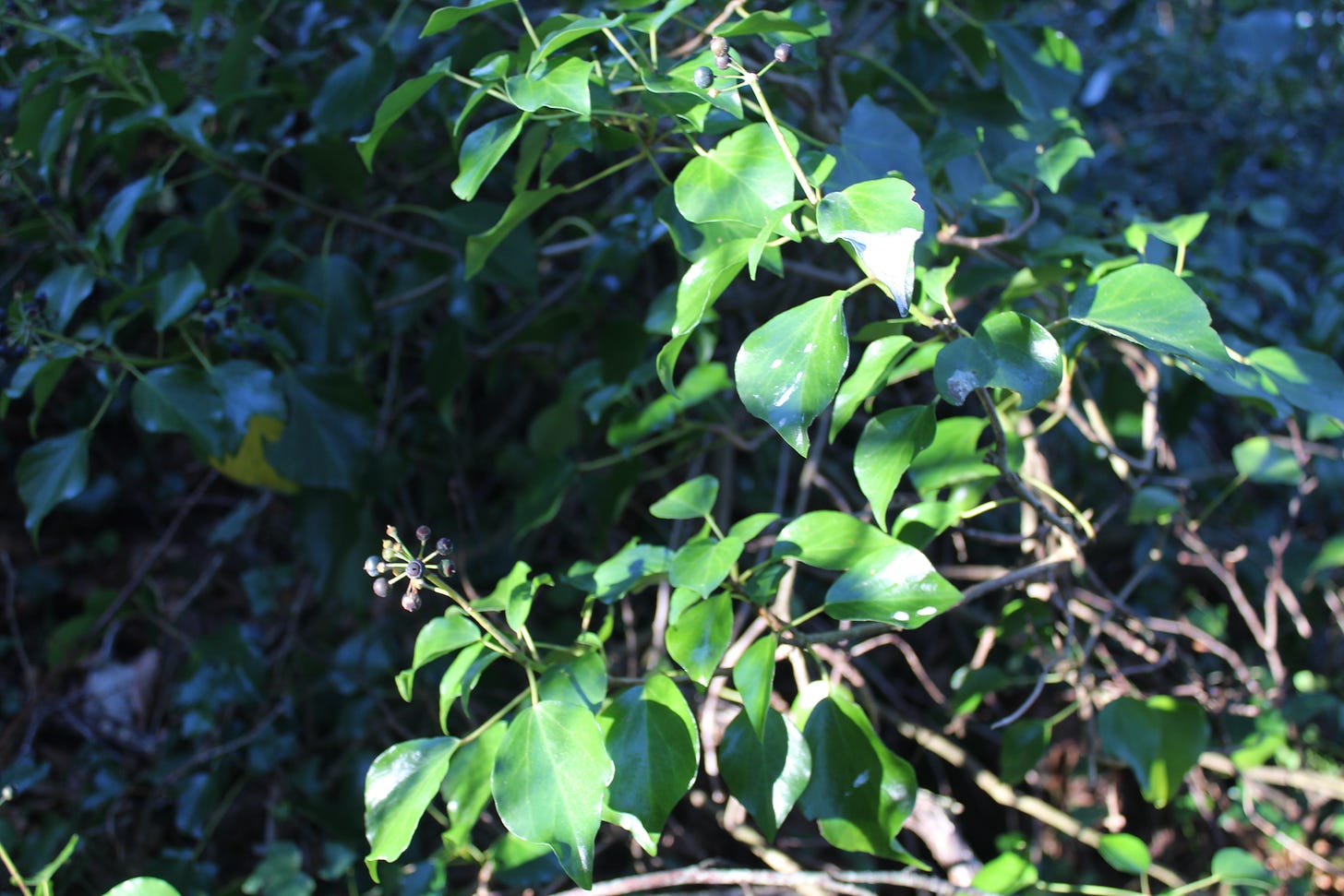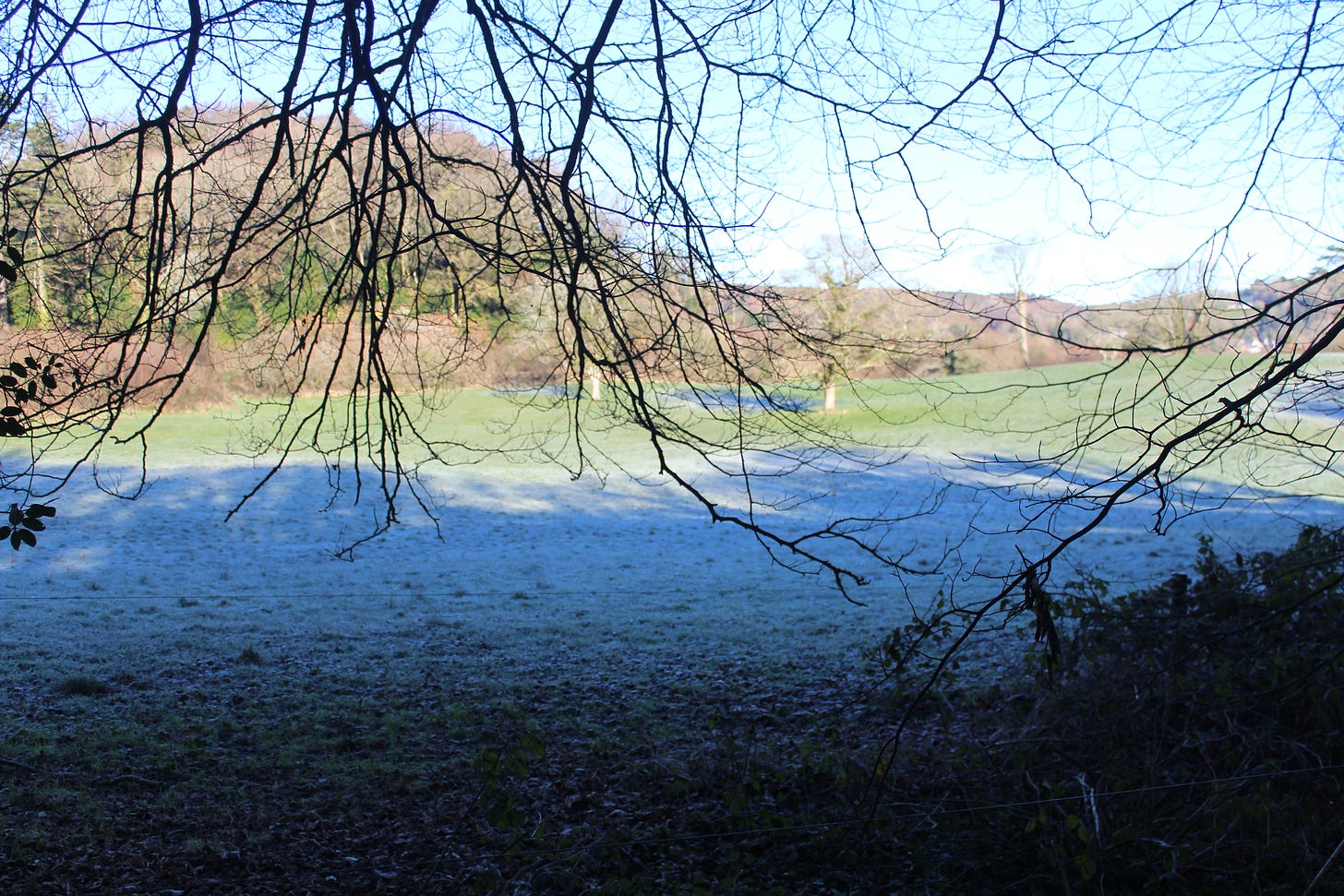I’m a bit behind on my journals. There has been lots of talking and activity and I’m craving the quiet reflective time I need to produce written work. There are hyacinths blooming in supermarkets, and daffodils in buckets for sale in petrol stations but the willow outside the window is barely budding. The spring bulbs around our house have only just poked their heads out and the winter greens are barely out of dormancy, I’ll be taking root cuttings from perennial kale in the next few days. Real life to me is still wintering. And I feel it too. I’ve observed the “stretch” as we call it, which makes the days longer. But it’s still not enough to sustain continuous work.
When I came to the estuary at Myross on January 18th I got out of the car to breathe in the cold air. I often roll down the car windows and turn everything but the engine off, so I can listen and breathe in the woods. That morning the sun was thawing the thick frost that had been with us for a bit. I felt I needed a thawing too. I hadn’t any major plans for the nursery session, so I took to the woods.
Anywhere that wasn’t covered by trees or had not yet felt the sun was frozen still. This hardy beauty (a foxglove) I would often pass on the way to the woods. On this morning I stayed with it a bit. Foxgloves come first after felling and are a regular feature after a clear cut. I get giddy watching their purple swaying digits fingering blue skies (its latin name digitalis purpea). With this one I thought of what was yet to come and all the seeds it would make and the many more foxgloves that would come to this part of the woods that is currently in development. It doesn’t yet have a canopy, which is why it is blanketed in frost. That doesn’t however make it less valuable, their is so much going on and their will be even more when spring arrives with plenty for insect life. I got to thinking of the permaculture principle “Use Edges and Value the Marginal”. And thought of how much their is to learn from watching this patch grow, in its own way, on its own terms with a bit of tlc from the Friends of Myross. What this patch is now is part of its own process.
In the woods was a different world. There was no visible frost. Maybe it was the heat from the decaying leaf litter and dead wood keeping so many things vibrant and alive. Fresh berries were on the Irish Ivy, some with mighty trunks which makes me think that they were very old. Holly was seemingly everywhere both spikey and smooth, showing genetic responses to animal browsing-spikey being thought a defense mechanism. I crept around areas that I had never been, now easier to access with less foliage confusing my spatial awareness. I saw so much in such a small space. And so many different variations of the same things, finding their own way to live. I tried to snap a holly with one limb outstretched in contradiction to the rest of itself. Encompassing new terrain, the leaves hung above open ground where seeds might fall or be deposited. In this woodland world reproduction is an everchanging process requiring creative ingenuity. In the real woodland world we should marvel and be surprised, and look at what these surprises might be telling us about what these ecosystems are capable of. It is fundamental to how we might help such ecosystems grow and recover.
I took out my secateurs and took some holly cuttings when I got out of the woods (the woods is protected and we are not allowed to take or bring in any material unless cleared by on site ecologist). I needed to do something productive and although holly is abundant in the woods it might not be elsewhere. So with the sharing spirit in mind I put them in the ground. I have heard that holly is tricky and by my guide it seems to be the wrong time of year. The book says September and a local lady said April. Lets see. In doing this I have opened my eyes to holly and should hope to give it more dedication next year.







